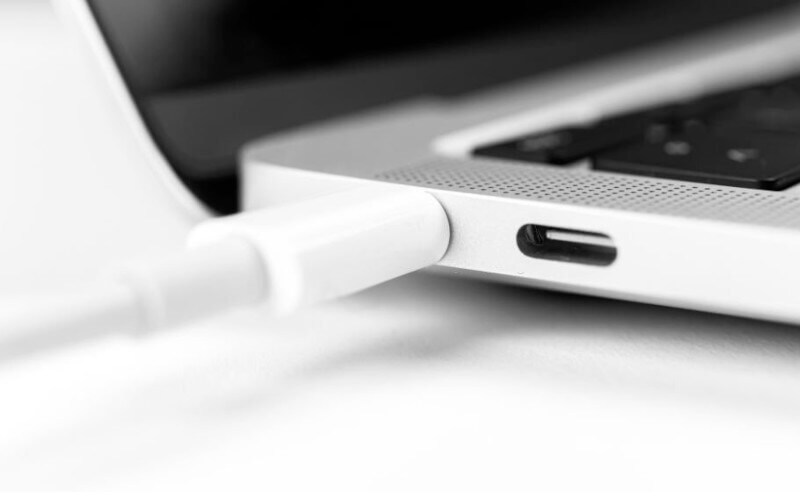If you’re a tech-savvy individual always looking for the latest and greatest in technology, you may have come across the term “Thunderbolt Bridge.” But what exactly is it, and why should you care about it?
Well, let me break it down for you. Simply put, a Thunderbolt Bridge is a device that allows you to connect two or more Thunderbolt devices, allowing for the transfer of data and power between them. This can be a game-changer for anyone looking to expand their device’s capabilities and increase productivity.
In this article, we’ll dive deeper into the world of Thunderbolt Bridges, including how they work, the different types available, their applications, and how to choose the right one for you.
By the end of this article, you’ll have a clear understanding of what a Thunderbolt Bridge is and why it might be a valuable addition to your technology arsenal.
How Thunderbolt Bridge Works
Okay, so now that we’ve established what a Thunderbolt Bridge is, let’s talk about how it works.
First off, let’s talk about the connection between Thunderbolt devices. The beauty of Thunderbolt technology is that it combines both data and power into a single cable, which means you only need one cable to connect your devices, rather than multiple cables for data and power.
This reduces the clutter on your desk and makes it easier to set up and connect your devices.
A Thunderbolt Bridge is a mediator between the two devices, allowing them to communicate and transfer data.
And, because the Thunderbolt technology combines data and power into one cable, the Bridge can also transfer power between the devices, which is particularly useful for devices that require a lot of power to function, such as high-end graphics cards.
One of the biggest advantages of using a Thunderbolt Bridge is the speed at which data can be transferred between devices. Thunderbolt technology is known for its high-speed transfer rates, with the latest version, Thunderbolt 3, able to transfer data at speeds of up to 40 Gbps.
This is significantly faster than other types of data transfer technology and means you can transfer large files in a matter of seconds.
The Thunderbolt Bridge is a powerful and convenient tool to connect multiple devices easily, share data quickly, and charge at lightning speeds. It’s the ideal device for any individual who wishes to extend their capabilities while boosting productivity.
Types of Thunderbolt Adapters
Now that we’ve understood how Thunderbolt Bridges work let’s discuss the available types.
First up, we have the Thunderbolt 3. This is the latest and greatest in Thunderbolt technology, offering speeds of up to 40 Gbps and the ability to connect up to six devices at once. It’s also compatible with both Mac and PC platforms, making it a versatile option for anyone.
Next, we have the Thunderbolt 2. While it’s an older version of Thunderbolt technology, it’s still popular. It offers speeds of up to 20 Gbps and the ability to connect up to six devices simultaneously. It’s important to note that this type of Bridge is only compatible with Macs, not PCs.
Choosing between the two comes down to your specific needs and the type of devices you use. If you’re using the latest and greatest technology and want the fastest speeds possible, then the Thunderbolt 3 is the way to go.
On the other hand, if you have older devices that are only compatible with Thunderbolt 2, that might be the better choice.
Applications of Thunderbolt Devices
So, what can you do with Thunderbolt devices? Well, let me tell you!
First and foremost, one of the most popular applications of a Thunderbolt device is connecting multiple displays to your computer. This is particularly useful for creative professionals, such as graphic designers and video editors, who need multiple screens for their work.
With a Thunderbolt device, you can connect multiple displays to your computer, increasing your screen real estate and making it easier to get more done.
Another popular application of a Thunderbolt Bridge is transferring data between computers. This capability is especially useful for those migrating older Macs to more recent ones seamlessly and conveniently. Utilizing a Thunderbolt Bridge, you can swiftly transfer large files between your work computer and home.
Finally, a Thunderbolt Bridge can expand your devices’ ports and connectivity options. For example, if your laptop only has a few USB ports, you can use a Thunderbolt Bridge to add additional ports and connect more devices.
This is particularly useful for connecting multiple devices, such as a mouse, keyboard, and external hard drive.
The applications of a Thunderbolt Bridge are many and varied. Whether you’re a creative professional, need to transfer large files between computers, or want to expand your device’s connectivity options, a Thunderbolt Bridge is a versatile and valuable tool in your technology arsenal.
Conclusion
Thunderbolt Bridges are a valuable and versatile tool for anyone looking to expand their device’s connectivity options, transfer data between computers, or connect multiple displays.
With the right Bridge, you can enjoy all the benefits of Thunderbolt technology, including fast speeds and the ability to connect multiple devices at once.
When choosing a Thunderbolt Bridge, you must consider your specific needs, the devices you’re using, speed, and cost. By taking the time to research and choose the right Bridge for your setup, you can ensure you’re getting the most out of your technology investment.
So there you have it! I hope this article has helped you understand what Thunderbolt Bridges are, how they work, the types available, their applications, and how to choose the right one.
Whether you’re a creative professional, a student, or someone who wants to get more done, a Thunderbolt Bridge is a valuable tool in your technology arsenal.






